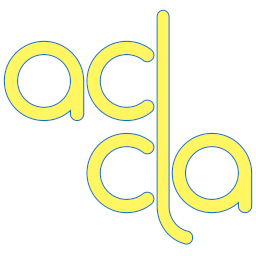Actes du Congrès de l’ACL 2020 2020 CLA conference proceedings
Les articles publiés dans ces actes ont été présentés lors du congrès annuel de l’Association canadienne de linguistique qui s’est tenu en ligne, du 30 mai au 1er juin 2020. Certaines des communications présentées n’ont pas été soumises par les auteures et les auteurs.
Rédactrices : Angelica Hernández & M. Emma Butterworth
En suivant les liens de la table des matières, vous pouvez télécharger les articles du congrès au format PDF.
Les droits d’auteur demeurent la propriété des auteures et des auteurs.
ISSN 0027-9633
The papers in these proceedings were presented at the annual conference of the Canadian Linguistic Association held online from May 30 to June 1, 2020. Not all papers given at the conference were submitted.
Editors: Angelica Hernández & M. Emma Butterworth
Follow the links in the table of contents to download the papers in PDF format.
Copyrights remain with the authors.
ISSN 0027-9633
Table des matières Table of Contents
- Sluicing in Lebanese Arabic: More evidence for cleft sources University of Ottawa
- Expressing a multiplicity of events in Macuxi University of Toronto
- Root alternations for discourse effects: A challenge for locality? York University, University of Toronto
- Adult acquisition of grammatical gender in instructed L2 Spanish and the role of metacognition Western University
- Automatisation de la détection de l’intoxication à l’alcool dans la parole Université du Québec à Montréal
- La morphosyntaxe de personne, de nombre et de genre dans l’accord du kanyen’kéha Queen’s University, University of British Columbia
- “C’est ça, right?”: Shifts in discourse marker use in Ontarian Laurentian French University of Western Ontario
- Addressee honorifics as allocutive agreement in Japanese and Korean University of Victoria
- Expressing paths of motion in Apurimac Quechua University of Toronto
- Variation dans les accords du français inclusif Western University
- Experimental and typological approaches to nasal vowel sonority Université de Montréal
- Dative case with infinitives in Russian Western University
- Vitality of Damana: The language of the Wiwa indigenous people of Sierra Nevada de Santa Marta in Colombia Western University
- The syntax of discourse: What an Anishinaabemowin oral text teaches us Queen’s University, University of British Columbia
- Revisiting “double” Ezafe in Southern Zazaki University of Toronto
- Une cartographie fine de la flexion verbale des verbes en arabe standard Université du Québec à Montréal
- Derived nouns and inflectional variability: A case for distinct nominalizers University of Toronto
- The two faces of a nominal linker: Another look at reverse Ezafe in Gilaki University of Toronto Mississauga, University of Guilan, University of Toronto
- Slavic meets Semitic: Nominal functional categories as underspecified heads McMaster University, independent researcher
- Analyse formantique de la voyelle de la pause remplie eux chez des Québécoises francophones de 10 et 11 ans Université du Québec à Montréal
- La norme de prononciation au Québec en 1970 et en 2019: Étude de l’affrication de /t/ et /d/ et du relâchement des voyelles /i/, /y/ et /u/ dans la lecture publique du poème Speak White Université du Québec à Montréal
- Variation in the possession of kinship terms in the dialects of Italy Western University
- Phonetic training of L2 Spanish rhotics University of Toronto
- What type of pronouns do Japanese and Korean have? University of Calgary
- Cross-linguistic evidence for underspecification in reflexive morphosyntax University of Victoria
- Ojibwe agreement in a representational, morpheme-based framework Carleton University, University of Rochester
- Which language do bilinguals swear in? Linguistics Consultancy Center of Canada (LCCCa)
- The representation of concrete versus abstract words: An eye-tracking study University of Ottawa
- F0 acoustic parameters’ effects on discrimination of lexical pitch accents University of Calgary
- Obligatory Indexical Shift in Turkish University of Calgary and Memorial University of Newfoundland
- Sweet songs and soft hearts: Metaphors in Cusco Quechua University of Toronto
- Scrambling for case: Accusative in Mongolian University of Toronto.
- Creating results in Northern Galilee Arabic Ben-Gurion University of the Negev and McMaster University
- Word-final obstruent devoicing in heritage Russian University of Manitoba
- Interacting with vocatives! University of Calgary, ICREA and University of Pompeu Fabra
- Methods for increasing equity, diversity, and inclusion in linguistics pedagogy University of Toronto
- Nodal Faithfulness in Harmonic Serialism York University
- Latin@s or Latinxs? Innovation in Spanish gender inclusive oral expression Western University
- Reactions to gender-inclusive language in Spanish on Twitter and YouTube Western University
- Two pluractional constructions in Mi’kmaw Ta’n L’nuey Etl-mawlukwatmumk (TLE), Eskasoni Band, TLE, University of Victoria
- Copy Raising in Persian University of Calgary
- Early morphological decomposition: The effect of derivational gaps University of Toronto
- Les titres de civilité: A DP analysis of French honorifics University of Toronto
- The syllabification of VV-sequences in Dàgáárè University of British Columbia



